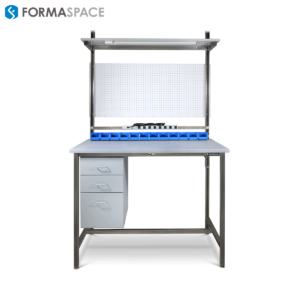When people around the world think of Houston, Texas, they probably think about ‘big oil’, cowboys on horseback and tumbleweeds rolling across a desert landscape. But if you’ve ever landed at the Houston airport, you don’t even have to get off the plane to know it’s not a desert. Once the door to the fuselage opens up — whoosh! — in comes the pervasive humidity of the Gulf Coast — causing you to momentarily lose your bearings and think you may have landed in Calcutta instead.
Yet Houston does have a cowboy-swagger, a frontier Boomtown feel. (In fact, one of the trendy coffee shops in the Houston Heights is called Boomtown just for that reason.) Part of the Boomtown sensibility derives from the fact that that Houston has resoundingly rejected traditional residential and commercial zoning. For many, the idea that the nation’s fourth-largest city doesn’t have zoning makes no sense. How could that possibly work? Wouldn’t you have gun shops and beauty parlors and car repair places next to nice neighborhoods?

Let’s Talk A Little Bit About Houston
The answer is yes, that’s not an uncommon sight in Houston. And there have been massive protests when, for example, the Ashby High-Rise project, a 20+ story mixed use residential tower wanted to move into a well-established residential neighborhood. But on the other hand, lack of zoning in Houston allows rapid redevelopment of residential and commercial property as the area’s demographic needs and lifestyle desires change. Today, there’s incredible demand for walkable urban neighborhoods close to amenities like parks, cafés and public transportation to work. The Millennial generation in particular is avoiding suburban living like the plague. Unlike their parents, this generation’s dream home is an urban loft and their ideal workspace is a convivial coffee shop where they can work on their freelancing gigs.
And it’s not just Millennials that want to say goodbye to the suburbs.
Living “Inside the Loop” has become a top goal for many Houstonians frustrated by increasingly long car rides to work. Consequently, over the past 15 years, the mighty development machine that built Houston’s suburban landscape has turned inward for new construction opportunities, specifically inside the 610 Loop that rings the core of Houston’s older neighborhoods.
The transformation of these neighborhoods has been dramatic. Cottages from the 1920s sitting on quarter acre lots are razed to the ground in an afternoon by a gang of front-end loader operators. Construction often begins the very next day on six new town homes on the site — all oriented around a central driveway. This configuration is known locally as a “sixpack”. The transformation inside the Loop has been dramatic.
Karen Lantz of Lantz Full Circle Architects Had a Dream of an All-American Made Home
Many older neighborhoods have increased their housing density by factor of six or more thanks to the influx of new town homes and apartment complexes. Certain areas feel more like downtown areas of Toronto than the Houston of twenty years ago. One Houston-area native, Karen Lantz, grew up south of the Loop in Pasadena, Texas. It’s a working-class city — known for its oil refineries and heavy industry — and as the home of the long closed but much remembered Gilly’s, the bar John Travolta made famous in the film Urban Cowboy.
Lantz got her education at the University of Houston, graduating with a degree in architecture, a field that the school is particularly well-regarded for, thanks in part to the legacy of famed architect Philip Johnson, who helped put their College of Architecture on the map. (He also designed many of Houston’s landmark buildings, including skyscrapers downtown and in the Galleria as well as landmark facilities at the University of Houston itself.
Now stepping out into her own career as an architect (as Lantz Full Circle Architects), Lantz wanted to create a signature residential home for herself and her dentist husband on a property they purchased in Houston’s Museum District. The property in question, a small non-descript ranch house on Bank Street was just like dozens of other homes in the neighborhood that had already been demolished and replaced with larger, modern McMansion residences.

But, in the face of this rapid redevelopment in Houston, Lantz wanted to make a statement about sustainability. Her ultimate goal was to take on the project with an eye toward achieving Platinum LEED certification, the highest standard for sustainable, green construction. So back in 2009, Lantz commenced with what was probably at the time Houston’s slowest demolition. Rather than bring in a crew to pull the building down in one day, she had every piece of timber, brick, window structure doors removed, piece-by-piece. They were either sold or, in many cases, donated to organizations like Habitat for Humanity, where they could be reused in future construction projects.
The cost for this slow style of demolition was more expensive by far, but ultimately the charitable donations helped her and her husband recoup the costs through their income tax statement. Meanwhile, planning for the new structure was underway. Lantz sought unique, expressive, and yet sustainable materials for her new home, which she intended to build last many generations. (Again, this is not a typical thought in Houston’s “build-it, use-it, raze-it, build-something-new-again” mentality.)
One thing that Lantz noticed as she began procuring unique hardware, materials, appliances and more for the new house: nearly everything she was interested in came from manufacturers overseas. As the Great Recession began to grip the US at the tail end of the the 2000s, it slowly dawned on Lantz there might be a connection between overseas manufacturing and the recession here at home. She also thought about the financial impacts her own family had faced when her father was laid off at a local steel plant years earlier. Lance became convinced that she had to take a stand. Her goal became not only to build a sustainable home but to build one entirely out of American-made products. The kicker? These American-made products also had to be well designed and attractive, which, as she found out, was not always the case, particularly for high-end lighting and hardware products.
American Made products help achieve Platinum LEED Certification
There were other considerations as well, given her goal of achieving Platinum LEED certification for the project. As you may recall from some the articles we’ve written about the ways that Formaspace furniture can help you achieve LEED certification, sourcing materials that are manufactured within 500 miles of the building site is an important LEED consideration. Lantz was able to find many of the masonry products in Texas, including marble chips, chocolate-brown limestone, tiles and grout.

She also uncovered many imposters: companies that would claim their products were “Made in the USA” but in fact they were assembled from foreign parts, or they simply just had a US sales office. In a few cases, she had to compromise. The thin film solar panels she wanted from a company in Denver? It turns out they were designed in Denver, but manufactured in China. She also ran into the problem of finding American sourced hardware.
We’ve written about this issue before, when we wrote about the Assembly Show in Chicago and Tim Hutzel and David Lippert’s book, “Bringing Jobs Back to the USA.” Lantz found that the hardware pulls made in the USA cost about 10 times what the Italian version did, and given that she needed over 150 pieces for her construction project, she compromised and went with the Italian version.
Last August, the completed project, which Lantz has dubbed The (Almost) All-American Home, received its official LEED Platinum Certification, verified by the Green Building Certification Institute. Rick Fedrizzi, President, CEO & Founding Chair, U.S. Green Building Council said, “The work of innovative building projects such as The (Almost) All-American Home is a fundamental driving force in the green building movement. This project efficiently uses our natural resources and makes an immediate, positive impact on our planet, which will tremendously benefit future generations to come. While climate change is a global problem, innovative companies like Lantz Full Circle are addressing it through local solutions.”

Among the many features commended by the Council: the home uses 67% less energy than required by code; there is no conventional lawn instead, there are native, drought tolerant plants; 99% of the demolition waste was reused or recycled; the 1000 ft.² basement provides natural cooling; LED lighting uses less energy; a 1400 gallon water tank collects rainwater for the food garden; thin film photovoltaic power generation (over 5,500 kW potential energy). Once again, congratulations to Karen Lantz for a job well done!
Formaspace can help build your own LEED Certified Home, Office, Laboratory, or Manufacturing Facility

We invite you to join the roster of satisfied Formaspace technical, manufacturing and laboratory furniture clients — including Apple Computer, Boeing, Dell, Eli Lilly, Exxon Mobile, Ford, General Electric, Intel, Lockheed Martin, Medtronic, NASA, Novartis, Stanford University, Toyota and more.
Give us a call today at 800.251.1505 to find out more about the Formaspace line of built-to-order computer workstations, industrial workbenches, laboratory furniture, lab benches and dry lab/wet labs — as well as our design / furniture consulting services. Like all Formaspace furniture, it’s backed by our famous 12 year, three shift guarantee.







